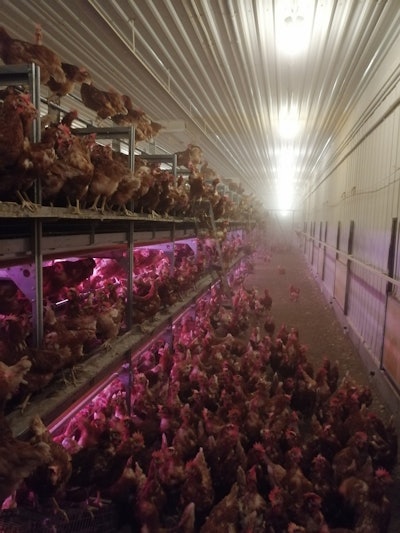
Animal welfare is not a simple issue, yet everyone has an opinion - in most cases without hands-on experience in managing and caring for birds, day after day.
Every egg producer understands the challenges of meeting the various aspects of welfare, including the heath and well-being, addressing birds’ nutrition needs, ensuring the quality of their living environment as well facilitating layers’ normal behaviors and positive feelings.
Evaluating laying hen quality of life is likely the most challenging element to measure since it involves some ethical decisions made by people on behalf of the hens and not everyone will necessarily share the same values.
Some groups are finally looking at farm data and what the birds are telling us. In a recent podcast, a renowned animal welfare scientist explained some of the reasons behind the recent change in position by the Retail Council of Canada, the organization representing more than 45,000 small, mid-sized and large retail stores across the country.
In 2016, the council announced at great lengths its members’ voluntary commitment to source only eggs produced in cage-free systems by 2025. Science, however, seems to have convinced them to backtrack on their position.
It is now clear from field experience that measurements in terms of health, feelings and natural behaviors point in different directions depending on which housing system is considered.
While birds in cage-free systems have more behavioral freedom, they are also more at risk from aggressive house mates, higher mortality and injuries. On the other hand, enriched cages are able to support some important behaviors, such as perching, nesting and foraging, which are highly valued by hens, while also offering the health and hygiene advantages of conventional cage systems.
Trade-offs
It is clear that none of the current housing systems are ideal meaning that some trade-offs are required.
Cage-free systems are much harder to manage and present greater health challenges for the birds - think coccidiosis, for example - and poorer air quality - think about the dust and feather particles generated by 30,00 hens walking and flying inside the barn.
It takes some time to adjust to new practices and we are still learning about housing designs and ways to best manage hens in cage-free systems. However, equating cage-free production to the ideal system is misleading consumers.
We need to continue explaining this scientific evidence, not only for the benefit of consumers but also for the benefit of our hens.

















